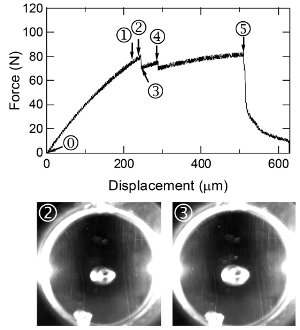
A new methodology to investigate the failure of elastomers in a confined geometry has been developed and applied to model end-linked polyurethane elastomers. The elastomers fail by the growth of a single cavity nucleated in the region of maximum hydrostatic stress. Tests carried out at different temperatures show that the critical stress at which this crack grows is not proportional to the Young’s modulus E but depends mainly on the ratio between the mode I fracture energy GIC and E. Comparison between different elastomers shows that the material containing both entanglements and crosslinks is both tougher in mode I and more resistant to cavitation relative to its elastic modulus. J Polym Sci Part B: Polym Phys 48:1409–1422, 2010

